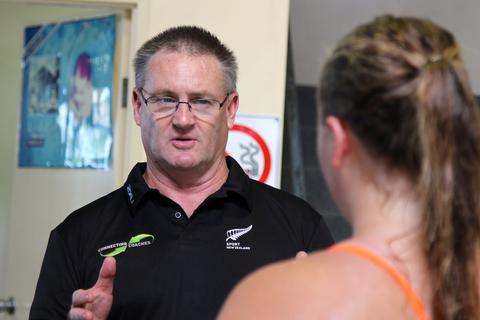Top Ten Talent I.D. Tips for High Performance Sport – The T.O.P. Approach

So much of the world’s high performance sports dollars (or Yens or Yuans or Euros or Pounds or Pesos or Rands depending on where you come from), time, energy, focus and attention is spent on three things:
- Talent identification;
- Talent recruitment;
- Talent development.
Or if you like, find them, sign them, refine them.
And most of the world has still got it wrong. There is a better way.
First item on the Talent Identification agenda…can we please change the name!!!
Let’s all agree to call it the “Talent Management” Program or the “Targeting Success” Program or something catchy like T.O.P. (Talent Optimization Program) but the term T.I.D. should be killed off, given a nice funeral and buried by the world’s sporting community once and for all.
Calling the overall process of finding, recruiting and optimising the performance potential of athletes “talent identification” is like calling a game of football “the kick off”. Finding talent is just the first step in a long, long process to turn potential into performance.
Number 2: Adopt an integrated approach.
There is too much focus on physical talent and physiological factors in all T.O.P.s all over the world. Success in high performance sport comes about from the integration and blending of physical, mental, technical, tactical, cultural / family and genetic factors or…my “big six”:
- Physical abilities;
- Personality characteristics;
- Playing skills;
- Performance abilities;
- Pedigree (i.e. genetic makeup);
- Preparation ((i.e. environment, family, culture).
Number 3: Invest ten times more money on talent optimisation and talent development than talent I.D because Real talent is harder to hide than it is to find: Finding talent is not hard.
Open your eyes! It is not hard to find kids who are bigger, stronger, faster or more skillful than their peers. Finding them is not the challenge – it’s what to do once you have found them that is the tricky part. The protocols used to screen athletes for “talent” have been around for over 60 years – test protocols are not the problem. It’s creating an optimal, integrated talent development pathway to turn potential into performance that’s the problem.
Number 4: Make your objective measurements of talent more subjective and your subjective measurements of talent more objective:
This the real trick in all applied sports science. There are no totally objective, research proven, evidence based methods of testing which can measure the “talent” and potential of an athlete and guarantee their elite level competition performance success. And similarly, the old days of just looking at an athlete and using some mystical “eye” or instinct to accurately predict their elite level competition performance success are over. It’s the blending of the objective with the subjective that gives the best results in any T.O.P. process.
Number 5: Any investment in a T.O.P. for athletes must be matched by a T.O.P. for coaches:
Governments and sporting organisations will spend millions on mass T.I.D. screening programs and implementing T.I.D. testing protocols then allocate pittance to educating and developing the people charged with developing that talent to its full potential: i.e. coaches. That just does not make any sense.
Number 6: Educate parents and the talented athlete’s immediate cultural influences:
You play like your place! Athletes – no matter how talented – need people and places around them which nurture them, support them, nourish them and love them. It is critical to influence, support, educate and help the parents, partners and peers of talented athletes so that they can better create an environment which enriches the athlete’s real performance potential.
Number 7: Stop beating around the bush with genetic testing– just get on with it:
We all know its coming – let’s face it – it is already here and the whole industry of Sport Genetics is an unstoppable force. Once we get around the ethical, religious and philosophical zealotry surrounding the genetic testing of athletes, everyone will be doing it. My advice – do it now. Just get on with it or risk being left behind by your competition.
Number 8: You need to learn to recognise genius, uniqueness and difference:
Sport is about health, fitness and lifestyle. It’s about providing opportunities for people to play sport through the implementation of standardised systems, structures and programs. High performance is completely different! High performance is about providing unique opportunities for unique individuals to realise their full potential. Too many T.O.P.s fail because they fail to recognise genius. They spend millions finding and recruiting talented athletes, then force them into standard programs to fit a funding model or some mythical all encompassing athlete development system. High performance means being different, being unique, being an individual and thinking, talking and acting outside the box.
Number 9: It has to be a“non-system” system:
As per number 8 – there is no system you can create which will guarantee the success of your team, your sport, your club or your nation in high performance sport. That’s because greatness and uniqueness are intimately entwined and uniqueness does not flourish in a system. That’s why the best win – they do it their way, they do it uniquely, they do it differently to the rest….and any high performance sport system which discourages difference will fail.
Number 10: There has to be multiple entry (and exit) points:
Too many teams, sports and even nations miss talent because of stringent rules about T.T.T. – Talent Testing Timing. Some of the biggest mistakes here include:
- Setting an age range – i.e. “we test kids aged 12-15” years;
- Creating elite junior development pathways which are rigid and inflexible (i.e. “you are either in or out”);
- Testing for now and not for the future – i.e. looking for talent and potential to sustain the team’s current style or system of play without thought of evolving it over time;
- Relying on historical data to provide a framework for the future, i.e. using test data from talented athletes from the past to evaluate the performance potential of athletes to be successful in the future.
Conclusion:
- There is no doubt that an effective T.O.P. is important for the success of every sporting team, organisation and nation.
- However, the way it has been done to date lacks real sophistication, practicality and effectiveness and it is time the whole concept of T.I.D. was revisited, revamped and re-developed.
There’s my Top Ten Talent I.D. Tips for High Performance Sp0rt – the T.O.P. Approach….what’s yours?
Wayne Goldsmith



12 Comments
Jeremy Pryce · July 13, 2010 at 11:23 pm
You just keep churning out good stuff, huh Wayne? I especially like that you include the home environment as a important component in talent development. This has long been a strong belief of mine.
I know too little about the genetic testing procedure to have an opinion on that. It all sounds high tech to me, which probably says more about me and where I am than anything else.
Thanks Mate!!
Wayne Goldsmith · July 14, 2010 at 9:31 am
Thanks Jeremy,
Talent I.D. – sorry – I mean T.O.P.s is a real “soapbox” of mine. Time and time again I see people talking about what a great idea it is to have a TOP in place but then all they do is do mass screening of a certain age range looking for physical talent.
That’s like selecting your next motor vehicle by kicking one tyre.
Let’s keep striving to give every talented kid in the world every possible change to realise their potential.
WG
james marshall · July 20, 2010 at 11:52 pm
Hi Wayne,
great post and very useful for a project I am working with at present. Here we no the dangers of just selecting the early developers- they either burn out or plateau before senior competition- but most of the governing bodies want you in their “system” by 16. They then spend more and more money trying to invest in the people already selected, rather than opening their eyes to others who are later developers, or who haven’t had access to the coaching.
Wayne Goldsmith · July 22, 2010 at 6:39 am
Thanks James.
Australia recently spent a lot of money doing an “independent” review of our talent id programs and systems and came up with the “great” idea of letting the same people do the same things the same way but with more money. These guys do not even respond to my emails and pleas for change, innovation, creativity and taking an integrated approach.
Guess where it will all end up?
WG
WG
Nick Johnston · July 30, 2010 at 1:13 am
Hi Wayne,
I agree with you that traditional “Talent” “ID” is barking up the wrong tree. Here’s an alternative way to spend the money – why not screen the parents and the athletes support structures? I think it is well established that all the genetic advantages in the world won’t mean much if you don’t have the right things going on in your life (unless you’re a freak, but why do you need a big screening process to spot a freak? Freak stand out like sore thumbs.) For the fat part of the bell curve, the ones who are going to have rely on hard work to get anywhere, we should ask whether they will be allowed to reach their potential by the people around them. Much more chance of success that way?
Nick
Wayne Goldsmith · August 6, 2010 at 6:55 am
Hi Nick.
Good comment. Sporting Parents I.D. – would be an interesting set of testing protocols!!!
For example:
Does the Parent provide unconditional love and support of the child?
Does the Parent work hard to develop core values and virtues in the child like honesty, integrity, discipline, hard work and humility?
Does the Parent provide support with important things like quality nutrition, sleep and rest?
Does the Parent have the capacity to keep sport and school in perspective and not become an over-zealous sporting parent?
I think you are on to something!
WG
Jim · August 9, 2010 at 6:10 pm
Wayne, have you read “the genius in all of us” by David Shenk? Exploration of latest thinking on environmental factors influencing abilities of all kinds. The gentleman above is quite correct. You don’t have to go looking for individuals to discover why certain people are more talented than others, look for circumstances instead.
Jim · August 9, 2010 at 7:38 pm
I should have said “dont go looking AT individuals to discover why certain people are more talented than others, look at circumstances instead.
Wayne Goldsmith · August 9, 2010 at 7:51 pm
Hi Jim.
I hadn’t read his stuff – but thanks to you I just visited his web site and read a few articles.
Interesting guy – very good stuff.
Not sure if you have found it, but check out http://www.businesscoachingbrain.com and the article called “Leading without Leading”. Let me know what you think.
Thanks for the comment and advice.
WG
Wayne Goldsmith · August 9, 2010 at 7:54 pm
Thanks again Jim.
I agree with you (and him) – our role as coaches and sports professionals should be to recognise the unique genius inside every athlete and help them to unleash it.
Too many times we find talented kids then force them to learn our ways, our methods and adopt our coaching philosophies rather than grow with them and give them “permission” to be themselves – to express their own unique, special “genius”.
WG
Will my son make it? – Rugby | Coach Talk · May 21, 2018 at 4:39 pm
[…] Top ten talent id tips for high performance sport – the T.O.P. approach. Wayne Goldsmith. https://www.wgcoaching.com/talentidtips/ […]
Developing rugby stars: The heart of home-grown talent – Rugby | Coach Talk · May 6, 2024 at 1:27 am
[…] Goldsmith, W. (2010). Top ten talent id tips for high-performance sport – the T.O.P. approach. Retrieved October 20, 2016, from https://www.wgcoaching.com/talentidtips/ […]